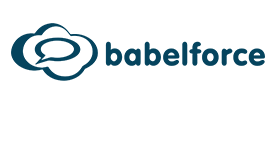Mikkel Rodam at babelforce explores the challenges facing legacy telecom providers, examining the risks of financial strain, failure to innovate, and the increasingly fragmented market that threatens their survival in an era dominated by cloud-native competitors.
To be clear, neither Mitel nor Avaya are likely to die this year. This isn’t even Avaya’s first time in bankruptcy; they did the same back in 2017. There will be some pain and some course correction.
(For example, Avaya is allegedly dropping many smaller clients to focus on its core 1500.)
They may not come out of it stronger – but they probably will come out of it. These are far from the only big fish with rumoured challenges. A lot of people in the business are talking about an industry reset that will severely challenge the older, middleweight suppliers.
Is it true? Who knows. But as a salesman, I can tell when there is blood in the water. I’m already talking to prospects who are spooked by the very public market failures.
What Makes an Incumbent Fail?
Zombie Businesses vs. Innovation
It’s an omnichannel world with no room for one-trick ponies. True, customers will forgive you if something “bleeding edge” – like your AI strategy – is still a work in progress.
What they won’t forgive is a vendor that’s years behind on core topics like their integration strategy or omnichannel engagement. Many legacy telecom providers are showing us just what happens when companies fail to innovate.
It doesn’t matter how dominant you became with proprietary hardware and traditional PBX systems. Today you need a clear path to cloud-based comms, AI-driven automation, and omnichannel experiences.
Modern businesses are smart enough to ask for more than a phone system. They want a communication ecosystem that creates opportunities to integrate voice, CRM, messaging, and – yep – AI.
So while the true innovators are evolving, the zombie businesses are limping along with the more or less the same USP they sold you in 2002.
Intense Financial Strain
Avaya in particular is refocusing its business on its core 1500 contracts. Allegedly, their contracts with sub-200 agents are getting dropped. Avaya is keeping quiet about it, but it’s in the minds of their customers either way. I can tell from the conversations I’m already having with them…
I can’t argue with a business defining its focus area – that’s always a positive move. When it comes at the cost of existing customers, though, the scope for reputational damage is huge.
What level of confidence would you have as, say, a 250-seat contact centre in that scenario? Would you worry about signing a contract today and getting dropped tomorrow?
The financial strain on legacy telecoms is immense. Years of accumulating debt, missed technology shifts, and the inability to keep up with more agile cloud-native competitors have left these companies in a precarious position.
Large, entrenched telecom players are often burdened by costly infrastructure and outdated service contracts that no longer fit today’s market demands.
And when cost-cutting measures start affecting customers, trust erodes quickly.
Customers want stability and long-term vision, not uncertainty. If a vendor is forced to scale back its commitments to remain financially viable, businesses will naturally question whether they’re next on the chopping block.
In contrast, newer providers built on flexible, scalable cloud models don’t carry the same baggage – allowing them to reinvest in innovation rather than just survival.
The difference between thriving and merely staying afloat is stark, and in telecom, financial struggles are often the first step toward obsolescence.
A Fragmented Market
There are a huge number of players in telecoms, and we’re all happy to take business away from each other.
The web of partnerships, resellers, and acquisitions gets pretty complicated.
This fragmented market represents a big challenge for middleweight incumbents. How do you differentiate when you lack either the velocity of a startup or the pure spending power of the major players?
For older telecom providers, the complexity of the CCaaS landscape is an existential threat. The days of selling a closed, proprietary phone system are long gone – businesses demand flexibility, seamless integrations, and continuous innovation.
But while cloud-native competitors iterate quickly, and tech giants loot their deep pockets to buy up capabilities, legacy vendors struggle to find their footing.
The trap is being too big to pivot like a startup but too small to outspend AWS, Salesforce, or Genesys. Heck, look at Zendesk’s recent list of high profile acquisitions – what can a legacy vendor do to compete?
Traditional business models, reliant on long-term contracts and hardware-dependent infrastructure, don’t align with a market that now expects rapid innovation and pay-as-you-go pricing. Stuck in the middle, these incumbents are squeezed from both sides.
The result? Some scramble to form partnerships with emerging players, hoping to stay relevant. Others try to pivot but move too slowly to make an impact.
The most vulnerable are left watching as their market share erodes, replaced by agile competitors who can deliver what modern businesses actually need. In this fractured landscape, survival requires more than just adaptation – it demands reinvention.
So is your vendor going to be there in a year? Personally, it’s not a gamble I would take – not in a market so rich in fast-moving alternatives.
For more information about babelforce - visit the babelforce Website
Call Centre Helper is not responsible for the content of these guest blog posts. The opinions expressed in this article are those of the author, and do not necessarily reflect those of Call Centre Helper.
Author: babelforce
Reviewed by: Jo Robinson
Published On: 1st Apr 2025
Read more about - Guest Blogs, babelforce, Mikkel Rodam






 babelforce is the composable customer experience platform uniting agents and automation.
Our platform gives you the power to create the customer experiences you’ve always wanted, with tools anyone can use.
babelforce is the composable customer experience platform uniting agents and automation.
Our platform gives you the power to create the customer experiences you’ve always wanted, with tools anyone can use. 








